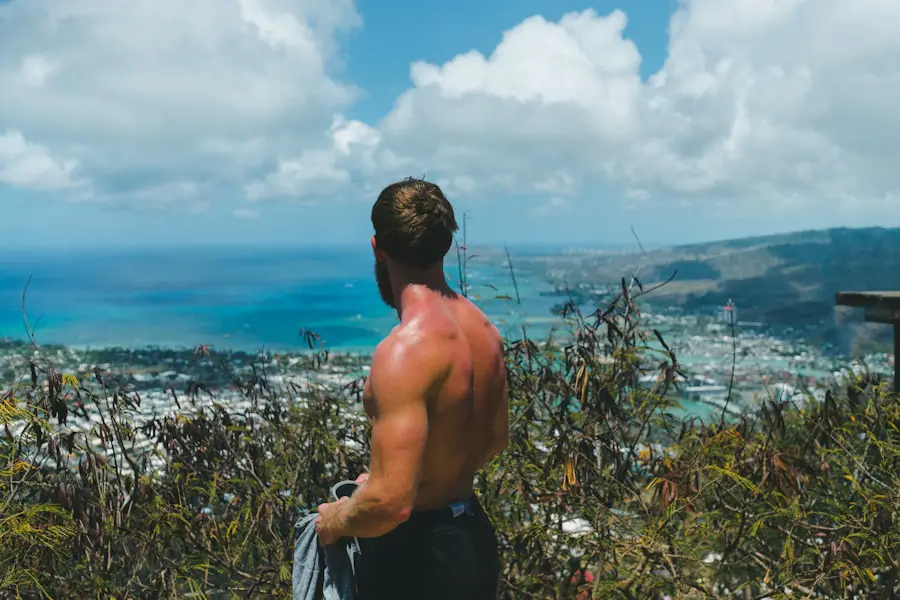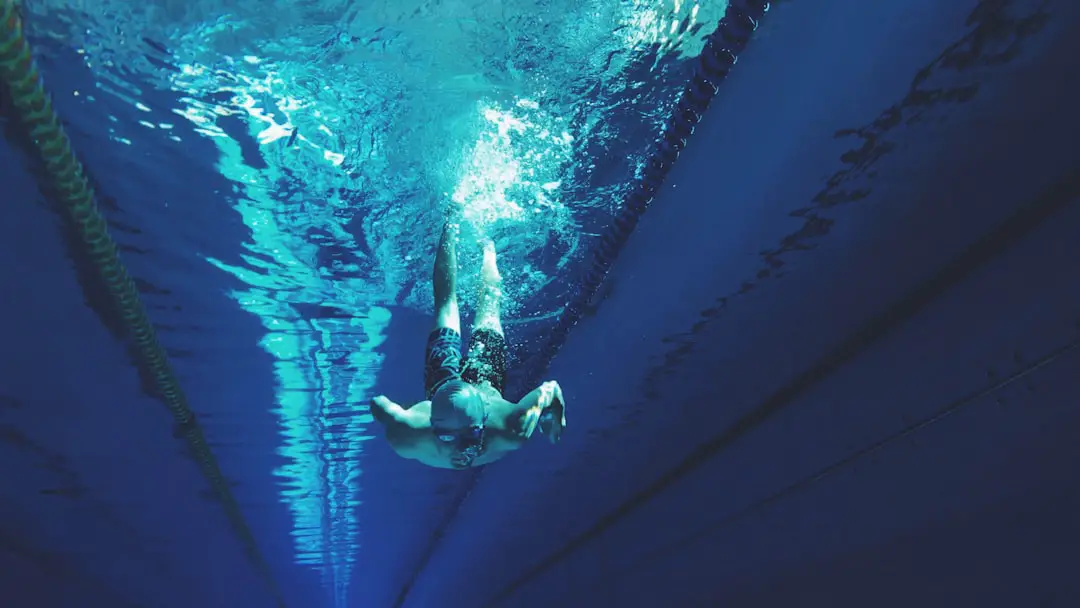Hiking is often celebrated as a recreational activity that allows individuals to connect with nature, explore scenic landscapes, and enjoy the great outdoors. However, beyond its aesthetic and mental health benefits, hiking serves as a powerful tool for physical fitness, particularly in building leg muscles. The act of traversing varied terrains engages multiple muscle groups in the lower body, including the quadriceps, hamstrings, calves, and glutes.
This multifaceted engagement not only enhances muscle strength but also contributes to overall endurance and stability. As more people seek alternative forms of exercise that combine enjoyment with physical benefits, hiking has emerged as a popular choice. Unlike traditional gym workouts that can sometimes feel monotonous, hiking offers a dynamic environment where the body is constantly adapting to changes in elevation and terrain.
This adaptability is crucial for muscle development, as it challenges the body in ways that standard exercises may not. By understanding the mechanics of hiking and its impact on leg muscle building, enthusiasts can optimize their outdoor experiences for maximum physical benefit.
Key Takeaways
- Hiking is an effective way to build leg muscles and improve overall strength and endurance.
- Engaging in proper hiking mechanics can help target and develop key leg muscles such as quadriceps, hamstrings, and calves.
- Inclines and declines during hiking can provide additional resistance and challenge, leading to greater leg muscle development.
- Weighted backpacks can be used to increase the intensity of hiking and further enhance leg muscle building.
- Hiking offers a unique and enjoyable alternative to traditional leg muscle exercises, with the added benefit of being in nature.
The Mechanics of Hiking and Leg Muscle Engagement
The mechanics of hiking involve a complex interplay of movements that engage various muscle groups in the legs. As hikers ascend or descend trails, they utilize a combination of flexion and extension at the knees and hips, which activates the quadriceps and hamstrings. The quadriceps, located at the front of the thigh, are primarily responsible for extending the knee during uphill climbs, while the hamstrings, situated at the back of the thigh, play a crucial role in stabilizing the knee and controlling descent.
Moreover, hiking on uneven terrain requires significant engagement from the stabilizing muscles in the legs. The calves, particularly the gastrocnemius and soleus muscles, are activated to maintain balance and support the body during each step. This engagement is further amplified when navigating rocky paths or steep inclines, where proprioception—the body’s ability to sense its position in space—becomes essential.
The constant adjustments made by these muscles not only enhance strength but also improve coordination and agility.
The Impact of Inclines and Declines on Leg Muscle Development

Inclines and declines are fundamental components of hiking that significantly influence leg muscle development. When ascending a hill, the body must exert more force to overcome gravity, leading to increased activation of the quadriceps and glutes. Research indicates that climbing steep inclines can elevate heart rate and metabolic demand, resulting in greater caloric expenditure and muscle engagement compared to walking on flat surfaces.
This heightened effort translates into improved muscle hypertrophy over time. Conversely, descending trails presents its own set of challenges for leg muscles. Eccentric contractions occur as muscles lengthen under tension while controlling descent.
This action is particularly taxing on the quadriceps, which must work diligently to prevent uncontrolled falls. Studies have shown that eccentric exercises can lead to greater muscle soreness but also promote significant strength gains. Therefore, incorporating both ascents and descents into hiking routines can create a balanced approach to leg muscle development.
The Role of Weighted Backpacks in Leg Muscle Building
| Study Group | Duration of Training (weeks) | Weight of Backpack (lbs) | Leg Muscle Strength Improvement (%) |
|---|---|---|---|
| Group A | 8 | 10 | 15 |
| Group B | 12 | 15 | 20 |
| Group C | 10 | 12 | 18 |
One effective way to enhance leg muscle building during hikes is by incorporating weighted backpacks. Carrying additional weight increases the overall load on the legs, forcing them to work harder with each step. This added resistance not only intensifies the workout but also stimulates muscle growth by creating micro-tears in muscle fibers that repair stronger over time.
The benefits of this practice are well-documented; studies have shown that resistance training can lead to significant improvements in muscle strength and endurance. When selecting a weighted backpack for hiking, it is essential to consider both weight distribution and comfort. A well-fitted backpack that distributes weight evenly across the shoulders and hips can prevent strain and injury while maximizing performance.
Additionally, gradually increasing the weight carried during hikes allows for progressive overload—a key principle in strength training—ensuring that muscles continue to adapt and grow stronger over time.
Comparing Hiking to Traditional Leg Muscle Exercises
While traditional leg exercises such as squats, lunges, and leg presses are effective for building strength, hiking offers unique advantages that set it apart from these conventional workouts. One significant difference lies in the functional nature of hiking; it mimics real-world movements that individuals encounter daily. This functional training aspect enhances not only muscle strength but also overall fitness levels by improving balance, coordination, and stability.
Furthermore, hiking engages multiple muscle groups simultaneously rather than isolating specific muscles as traditional exercises often do. For instance, while performing a squat primarily targets the quadriceps and glutes, hiking activates these muscles along with stabilizers like the calves and hip flexors. This comprehensive engagement leads to improved muscular endurance and functional strength that can translate into better performance in other physical activities.
The Importance of Proper Form and Technique in Hiking for Leg Muscle Development

Proper form and technique are paramount when it comes to maximizing leg muscle development during hiking. Incorrect posture or movement patterns can lead to inefficiencies in muscle engagement and increase the risk of injury. For instance, maintaining an upright posture with a slight forward lean during ascents allows for optimal force generation through the legs while minimizing strain on the lower back.
Foot placement is another critical aspect of proper technique. Placing feet flat on the ground with each step ensures even weight distribution across the foot, engaging all relevant muscle groups effectively. Additionally, using trekking poles can help distribute weight more evenly and provide stability on uneven terrain, allowing hikers to maintain proper form even when fatigued.
The Benefits of Hiking for Overall Leg Strength and Endurance
Hiking is not only beneficial for building leg muscles but also plays a crucial role in enhancing overall leg strength and endurance. The combination of resistance from inclines, varied terrain, and potential added weight from backpacks creates a comprehensive workout that challenges both fast-twitch and slow-twitch muscle fibers. Fast-twitch fibers are responsible for explosive movements, while slow-twitch fibers are essential for endurance activities; hiking effectively engages both types.
Moreover, regular hiking can lead to improved cardiovascular fitness due to its aerobic nature. As hikers navigate trails over extended periods, their heart rate increases, promoting better circulation and oxygen delivery to working muscles. This cardiovascular benefit complements muscular development by enhancing stamina and allowing individuals to hike longer distances without fatigue.
Addressing Common Myths and Misconceptions about Hiking and Leg Muscle Building
Despite its numerous benefits, several myths persist regarding hiking’s effectiveness for leg muscle building. One common misconception is that hiking alone cannot lead to significant muscle gains compared to traditional weightlifting. While it is true that lifting heavy weights can produce rapid hypertrophy, hiking offers a unique blend of resistance training combined with endurance work that can yield impressive results over time.
Another myth is that only steep hikes contribute to muscle building; however, even moderate trails can provide substantial benefits when approached with intention. The key lies in varying intensity levels—incorporating both challenging ascents and flatter sections can create a well-rounded workout that promotes muscle engagement without overwhelming the body.
Tips for Maximizing Leg Muscle Building During Hiking
To maximize leg muscle building during hikes, several strategies can be employed. First, varying trail difficulty is essential; seeking out routes with diverse elevations will challenge muscles differently and promote growth. Incorporating interval training—alternating between fast-paced sections and slower recovery periods—can also enhance intensity and stimulate muscle adaptation.
Additionally, focusing on stride length can make a significant difference in muscle engagement. Longer strides tend to activate more gluteal muscles while shorter strides emphasize quadriceps activation. Experimenting with different stride lengths during hikes can help target specific muscle groups more effectively.
The Role of Nutrition and Recovery in Leg Muscle Development through Hiking
Nutrition plays a vital role in supporting leg muscle development through hiking. Consuming adequate protein is essential for repairing micro-tears in muscles after strenuous hikes; sources such as lean meats, legumes, and dairy products should be prioritized post-exercise. Carbohydrates are equally important as they provide energy for sustained performance during long hikes; whole grains, fruits, and vegetables should be included in pre-hike meals.
Recovery is another critical component of muscle development that should not be overlooked. Allowing sufficient time for rest between hikes enables muscles to repair and grow stronger. Incorporating active recovery techniques such as stretching or low-intensity activities like walking or yoga can further enhance recovery processes while maintaining flexibility.
Hiking as a Leg Muscle Building Activity
Hiking stands out as an effective activity for building leg muscles due to its unique combination of resistance training, cardiovascular benefits, and functional movement patterns. By understanding the mechanics involved in hiking and implementing strategies such as proper form, varied terrain selection, and nutritional support, individuals can optimize their outdoor experiences for maximum leg muscle development. As more people embrace hiking as a legitimate form of exercise, it becomes clear that this activity offers not only physical benefits but also an opportunity to connect with nature while enhancing overall fitness levels.
If you’re interested in learning more about how hiking can build leg muscle, check out this article on 5 Amazing Tent Camping Spots Near You This Spring. This article discusses the physical benefits of camping and hiking, including how it can help strengthen your leg muscles. So next time you’re planning a camping trip, consider incorporating some hiking into your itinerary to give your legs a good workout.
FAQs
What muscles are used when hiking?
Hiking primarily engages the muscles in the legs, including the quadriceps, hamstrings, calves, and glutes. It also involves the core muscles for stability and balance.
Does hiking build leg muscle?
Yes, hiking is an effective way to build leg muscle. The uneven terrain and inclines of hiking trails require the legs to work harder, leading to muscle strengthening and toning.
How does hiking contribute to leg muscle development?
Hiking involves repetitive movements such as walking uphill, stepping over obstacles, and navigating uneven terrain, which all contribute to the development of leg muscles. The resistance from the ground and the body’s weight bearing down on the legs also helps to build muscle.
Are there specific hiking techniques to maximize leg muscle engagement?
Engaging in uphill hiking, using trekking poles, and maintaining a brisk pace can all help to maximize leg muscle engagement during a hike. Additionally, wearing a backpack with some weight can add resistance and further challenge the leg muscles.
Can hiking alone build significant leg muscle mass?
While hiking can certainly contribute to building leg muscle, it may not be sufficient on its own to build significant muscle mass. Incorporating other strength training exercises specifically targeting the legs can complement the muscle-building effects of hiking.
